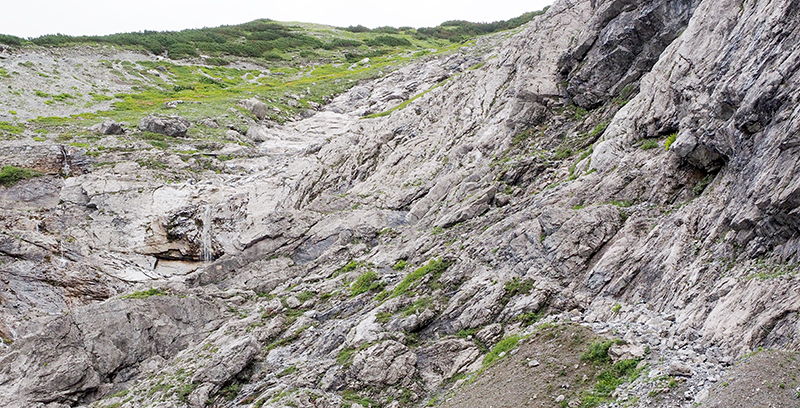
Similarities between rock wool and slag wool:
1. Both of them belong to mineral wool, which are non-polar fibrous product formed with natural rock or slag and other raw materials through high-temperature smelter under the role of centrifugal force and wind.
2. The ingredients are silicon dioxide, aluminum oxide, calcium oxide, magnesium oxide and a little iron oxide, etc.; a small number of phenol-formaldehyde resin shall be added in order to make it mold.
Differences between rock wool and slag wool:
Traditionally, the product produced with slag as main raw materials is slag wool and the product produced with natural stone as main raw materials, such as basalt and diabase, is called as rock wool.
Acidity coefficient is generally regarded as the main mark to distinguish rock wool and slag wool from professional view. Acidity coefficient refers to the ratio between the sum of acidic oxide and the sum of basic oxide in the product, i.e.: acid-base coefficient MK = (silicon dioxide + aluminum oxide) / (calcium oxide + magnesium oxide), moreover, acidity coefficient ≥1.6 is rock wool, while acidity coefficient <1.6 is slag wool. In general, the acidity coefficient is bigger, the chemical durability of rock wool and slag wool is better. The acidity coefficient of rock wool is higher, so the chemical durability, high-temperature resistance and other performances are superior to that of slag wool.
Main raw materials: the main raw materials of rock wool are basalt, diabase, gabbro, dolomite, limestone and other natural ores, which are generally melted in cupola with coke as fuel; the main raw materials of slag wool are blast furnace slag, steelmaking
slag, titanium alloy slag, non-ferrous smelting slag, iron-melting furnace slag, fly ash,
whirlwind slag, etc., which are also melted in cupola with coke as fuel.
Colors: rock wool is sage green and the main reason is the role of intensive dyeing of
iron oxide (Fe2O3). The color of slag wool is white or off-white.
PH value: generally, PH value of rock wool is less than 4, while PH value of slag
wool is more than 5 and even more than 6.
Water resistance: rock wool has good water resistance; while slag wool has poor
water resistance, so it is not suitable to use in humid environment.
Heat-resistance temperature: the operating temperature of rock wool can reach above 800℃ and softening temperature can reach to 900-1000℃. Slag wool is easy to generate pulverization to disintegrate at 675℃, so the operating temperature of slag wool shall not be more than 675℃.
Corrosion resistance: generally, rock wool has no more sulfur source, except micro-sulfur brought in by coke as smelting by taking basalt or diabase as raw materials, so it has no corrosive effect to metal; the sulfur content of slag wool generated with slag as main materials is around 5%, which would have corrosive effect with metal when it is used in the environment with high humidity.
Thermal conductivity: the thermal conductivity of rock wool is 0.037-0.039W/mk, while the thermal conductivity of slag wool is a bit higher.
Differences between rock wool and asbestos:
Rock wool is made of basalt and other natural mineral ores as main materials by melting at high temperature into fiber and adding proper adhesive through solidification, processing and production, which is widely used in ship, metallurgy, electric power, building and other industries with thermal insulation, heat insulation, incombustibility, light weight, acoustic insulation and other good performances. Rock wool board is a new-type insulated, incombustible and acoustic material. Rock wool has no harm to human health.
Asbestos is a general term of natural fibrous silicoide and a kind of silicates mineral fiber widely used in board fireproofing of building materials. Asbestos fiber refers to inorganic mineral fiber of serpentinite and hornblende series, of which the basic component is hydrated magnesium silicate (3MgO·3SiO2·2H2O). The characteristics of asbestos fiber are heat resistance, incombustibility, waterproofing, acid resistance and chemical resistance. The asbestos fiber has more than 30 types, but there are 3 types used most in industry, i.e. chrysotile, crocidolite and amosite. Asbestos has carcinogenicity, which has the possibility to infect cancer-type mesothelioma and lung cancer in serious environment of asbestic dust.
락울과 광면의 같은 점:
1. 모두 광물면에 속하고 천연암석이나 광찌꺼기 등 원료를 고온용해를 통해 이심력과 바람의 작용하에 형성시킨 무급 섬유형 제품입니다.
2. 주요성분은 이산화규소, 알루미늄옥사이드, 산화칼슘, 산화마그네슘이며 소량이 산화철이 들어있습니다. 형태를 형성시키기 위해 소량의 페놀수지를 넣습니다.
락울과 광면의 부동점:
습관적으로 광재를 주요원료로 생산하는 제품은 광재면이고 현무암, 휘녹암 등 천역석을 주요원료로 생산하는 제품을 락울이라고 합니다.
전업적인 각도에서 일반적으로 산도계수를 락울과 광면을 구분하는 주요표징으로 삼
습니다. 산도계수는 제품중 산성 산화물의 합과 염기성 산화물의 합의 비율을 가리킵
니다. 즉 산알칼리계수 MK=(이산화규소+알루미늄 옥사이드)/(산화칼슘+산화마그네슘)산도계수≥1.6일시 락울이고 산도계수<1.6일시 광재면입니다. 일반적으로 산도계수가 클수록 락울과 광재면의 화학내구성이 더욱 좋습니다. 락울의 산도계수가 높으면 화학온정성과 내고온 등 성능이 광재면보다 우수합니다.
주요 원재료:락울의 주요 원재료는 현무암, 휘녹암, 휘장암, 백운석, 석회석 등 천연광석이며 일반적으로 코크스를 연료로 하여 용선로에서 융해시킵니다. 광재면의 주요 원재료는 고로슬래그, 제강광재, 티타늄 합금 광재, 유색제련광재, 化铁炉渣、석탄재、旋风炉渣 등이 있으며 코크스를 연료로 하여 용선로에서 융해시킵니다.
외관색상: 락울은 회녹색이며 산화철(Fe2O3)이 강한 염색작용이 있기 때문입니다. 광재면은 백색 혹은 회백색입니다.
PH수치:락울의 PH수치는 일반적으로 <4 이며 광재면의 PH수치는 일반적으로 >5이고 심지어 >6이기도 합니다.
내수성: 락울은 양호한 내수성을 가지고 있고 광재면은 내수성이 차하고 습한 환경에서 사용하기 적합하지 않습니다.
내열온도:락울의 사용온도는 800℃이상, 연화온도는 900-1000℃에 도달합니다. 광재면은 675℃에서 분화가 발생하여 해체가 되며 광재면의 사용온도는 675℃를 초과하지 말아야 합니다.
내부식성:락울은 현무암 혹은 휘녹암 등을 원료로 하고 용해시 코크스를 통해 미량 유황을 가져가는 외에 기타 유황래원이 존재하지 않아 금속에 부식작용이 없습니다. 광재며의 주요원료는 광재이므로 유황함량이 5%정도이고 습기가 많은 환경에서 사용시 금속과 접촉하여 부식작용을 일으키게 됩니다.
도열계수:락울의 도열계수는 0.037—0.039W/mk이고 광재면의 도열계수는 상대적으로 높습니다.
락울과 석면의 부동점:
락울은 현무암과 기타 천연광석 등을 주요원료로 하고 고온용융을 거쳐 섬유로 만들어진 후 적당량의 접착제를 넣어 고화가공생산을 거쳐 만들어졌습니다. 단열, 보온, 불연, 경질, 방음 등 양호한 성능이 있으며 선박, 야금, 전력, 건축 등 업계에 광범히 사용됩니다. 락울판은 신형의 보온, 단열, 흡음재료입니다. 락울은 인류의 건강에 영향주지 않습니다.
석면은 천연섬유형태의 규질광물의 통칭이며 건축재료방화판의 교산염류 광물섬유에 광범하게 사용됩니다. 석면섬유는 사문암과 각섬석계의 무기광물섬유이며 기본성분은 수화규산마그네슘(3MgO·3SiO2·2H2O)입니다. 석면섬유의 특점은 내열, 불연, 내수, 내산, 내화학부식 등입니다. 석면섬유는 30여가지가 있는데 공업에서 제일 많이 사용하는 것은 3가지입니다.즉 온석면, 청석면, 철석면입니다. 석면은 암유발성이 있으며 석면가루가 많은 환경에서 암형 중피종과 페암에 감염될 가능성이 있습니다.


